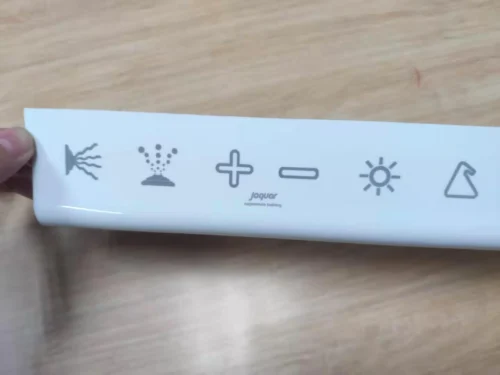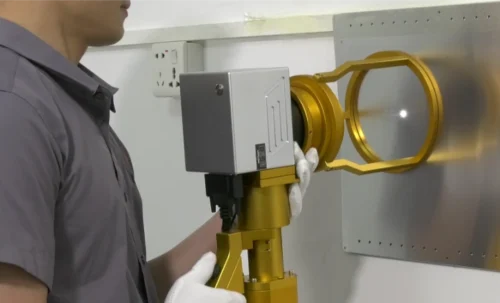The trends and innovations worth noting in laser marking for the year 2024 include:
1.Manufacturing uses lasers for marking, carving, and cutting. There have been advancements in their application.
2. Expansion of laser applications in industries such as cleaning, welding, beauty, and healthcare.
The debut of CO2 laser marking took place for the first time in the world in 1967. With the commercialization of advanced CO2 laser systems, it reached maturity by the mid-1970s.
Laser marking devices are now widely used in industries such as food and engraving. Becoming essential in diverse sectors such as aerospace, medical devices, etc.
- The rapid evolution.
- Precise engraving.
- Non-contact attributes.
This technology firmly establishes itself as an essential tool in diverse domains.
The technology is fast, accurate, and doesn’t touch, so it’s important in many areas.
These industries now include aerospace, medical device manufacturing, pharmaceuticals, and retail. This technology is fast, accurate, and doesn’t need physical contact. Many industries use it.
CO2 lasers application areas:
CO2 lasers work by filling a tube with CO2 gas and using electric current to generate a laser beam. This laser beam possesses high power, stability, and adjustability. Marking applications favor it. In the food packaging industry, CO2 lasers mark product information, dates, and barcodes.
This enhances production efficiency and traceability. CO2 lasers can enhance craft engraving by creating patterns and adding text, adding artistic value.
Benefiting from technological advancements, laser marking systems have found extensive applications in industries. Such as aerospace, medical device manufacturing, pharmaceuticals, and retail.
① CO2 lasers can mark spacecraft parts, pipelines, and electronics in the aerospace industry. This facilitates tracking and identification.
② In medical device manufacturing and the pharmaceutical industry, CO2 laser machine can mark medical instruments and pharmaceutical packaging. This ensures the authenticity and traceability of products.
③In the retail sector, CO2 lasers find application in marking product prices, serial numbers, and brand logos. This improves the efficiency and accuracy of inventory management.
Advantages of laser marking:
Despite competition from other technologies. Such as inkjet printing, there is still room for improvement in laser technology. But, lasers have proven to be a powerful, cost-effective, low-consumable, and repeatable marking.
This process helps the environment because it doesn’t use ink, cartridges, or paper. Laser marking systems have diversified beyond the exclusive use of CO2 lasers. Other technologies, for example, fiber lasers, EP lasers, and Nd: YAG solid-state sources. They can offer smaller designs, lower maintenance costs, efficient alternatives, and save labor.
Advancements in technological capabilities are also evident. Commercial laser marking systems can now process thousands of items per day. Substantially diminishing labor costs and delivering greater advantages to factories.
“Ceramic circuit laser marking” trend:
We face challenges when using new materials for various purposes. Challenges fuel growth and shape the laser systems market by creating a need for progress.
We use the term “mothers” to refer to PCBs in electronic system products. Almost all electronic devices use them. Minor changes in the development of PCBs have a significant impact on market trends.
In recent years, the focus on using ceramics in traditional PCBs has shifted, with these boards being made from plastic epoxy resins such as FP4. Ceramic circuit boards handle heat well, are easy to use, and perform exceptionally.
However, many marking technologies, such as silk screening, are not suitable for ceramics. Making ink on ceramics is complex and uses many materials, but the markings are not durable. The brittleness and hardness of ceramics also make them challenging materials to mark.
Therefore, in recent years, lasers have emerged as an alternative to ink printing technologies. Many laser companies have made laser machines for customizing ceramics with special designs. These machines use UV lasers and CO2 lasers. Mr. Lvy, the owner of Hispeed Laser, emphasized, “This certainly includes the trend toward miniaturization.”
However, he emphasized that introducing new market trends does take time. “Are there new applications every week? No. But 15 years ago, we never marked on miniature ceramics, and now we do.”

More flexibility in materials, shapes, and sizes trend:
However, for Hispeed laser technology’s current plan ceramic marking in the electronic field. Which does not currently represent the largest market.” “In our future plans, the medical devices industry holds the most interest,” Mr. Lvyu remarks. “Followed by automotive and electronics” The required machine types vary significantly depending on the industry and related sectors.”
Mr. Lyvu said that Hispeed Laser needs to be flexible because they get customers with specific demands. Therefore, the lasers they use are suitable for marking different materials, shapes, and sizes, as well as varying batch sizes.
The range of markings they can offer is as diverse as their customer base. Hispeed laser lasers can generate a wide range of markings and engraving. QR codes, barcodes, graphics, and data matrices work quickly and can be copied easily.
Their marking systems include gas, fiber, and solid-state lasers, encompassing CO2 and YAG systems. Laser marking is pulse-based, with a working wavelength range of 0.355µm-10.6µm. Each type of laser has its own characteristics, with some similarities. CO2 lasers are employed for marking plastics, rubber, paper, and foils.
Fiber lasers excel in marking steel and certain plastics; YAG lasers are well-suited for marking metals and ceramics.
Therefore, Hispeed System’s latest product, “Portable handheld laser marker”.
Which carries a 20W source in a compact and small workstation that can be easily moved into a production environment, or every place you want. The system is capable of creating “permanent, sharp, and anti-counterfeit” markings on metal and plastic.

Demand for component traceability is a growing trend:
Another significant trend in the laser marking field is ensuring and enhancing traceability. Which through unique identification marks on the surface of products for individual recognition.
There are many types of markings, but data matrices like QR codes are now very important and popular. By uniquely marking individual products with their own data matrix code.
You can easily find the manufacturer, batch number, and expiration date on the packaging. This provides quality assurance: consumers and users can ascertain the exact origin of the product.
This quality can be made sure to establish a direct link between users and manufacturers. Adding value to the products and enabling them to compete in industries with lower manufacturing costs.
Laser technology is very precise. It can encode codes as small as 200μm, which humans can’t see. But easily checkable with a smartphone if one knows their location.
At such sizes, data matrices can be used for anti-counterfeiting purposes. Which makes it easy to non-invasively verify the authenticity of high-quality goods.
The pharmaceutical industry is undergoing significant impact.. It prevents fraudulent production and sale of drugs like tablets.
Component traceability also plays a crucial role as evidence in litigation. In the case of a failed medical transplant, traceability helps find the exact problem.
Product recalls are easier and customers have more control!
